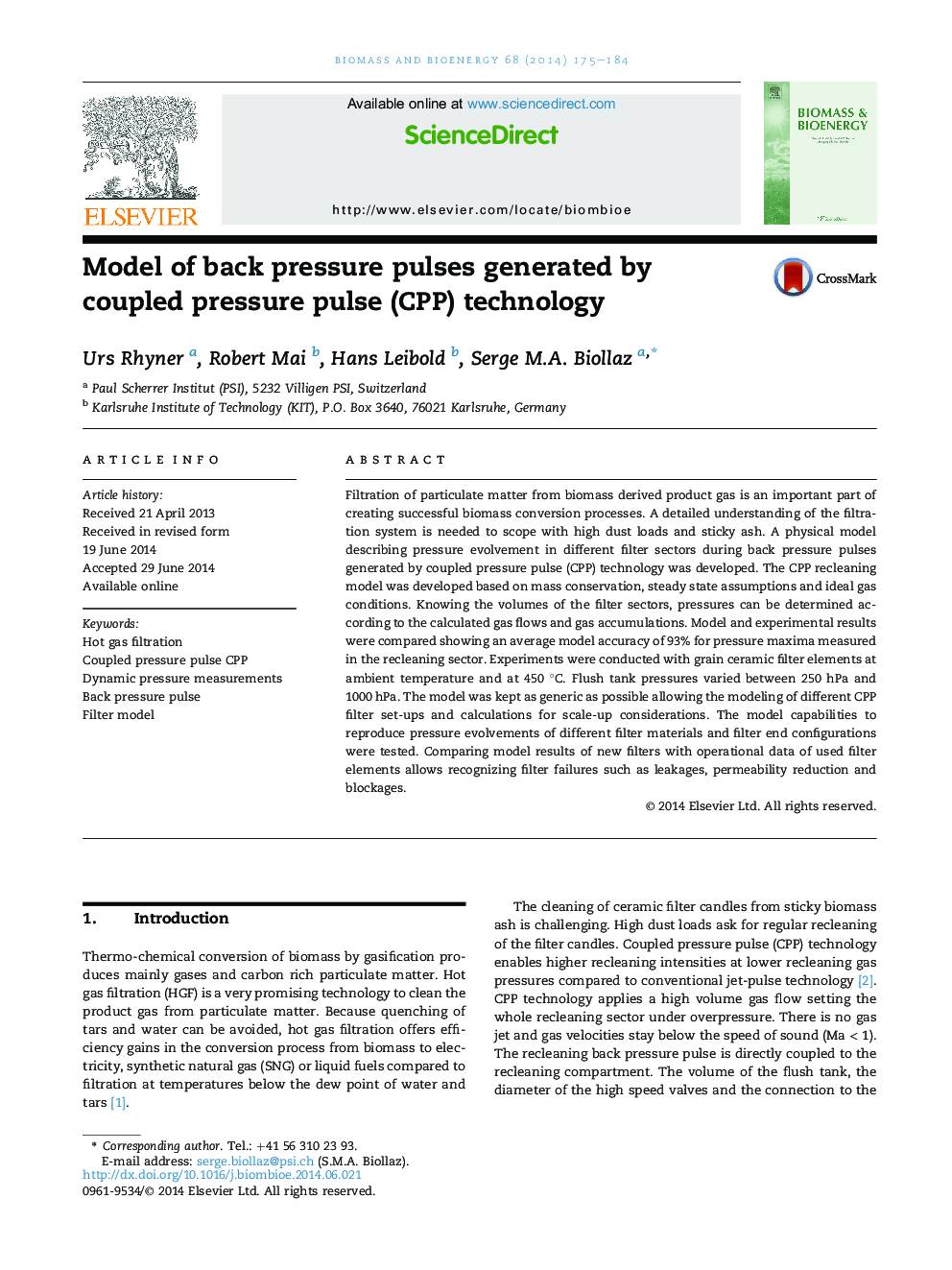| Article ID | Journal | Published Year | Pages | File Type |
|---|---|---|---|---|
| 7064430 | Biomass and Bioenergy | 2014 | 10 Pages |
Abstract
Filtration of particulate matter from biomass derived product gas is an important part of creating successful biomass conversion processes. A detailed understanding of the filtration system is needed to scope with high dust loads and sticky ash. A physical model describing pressure evolvement in different filter sectors during back pressure pulses generated by coupled pressure pulse (CPP) technology was developed. The CPP recleaning model was developed based on mass conservation, steady state assumptions and ideal gas conditions. Knowing the volumes of the filter sectors, pressures can be determined according to the calculated gas flows and gas accumulations. Model and experimental results were compared showing an average model accuracy of 93% for pressure maxima measured in the recleaning sector. Experiments were conducted with grain ceramic filter elements at ambient temperature and at 450 °C. Flush tank pressures varied between 250 hPa and 1000 hPa. The model was kept as generic as possible allowing the modeling of different CPP filter set-ups and calculations for scale-up considerations. The model capabilities to reproduce pressure evolvements of different filter materials and filter end configurations were tested. Comparing model results of new filters with operational data of used filter elements allows recognizing filter failures such as leakages, permeability reduction and blockages.
Related Topics
Physical Sciences and Engineering
Chemical Engineering
Process Chemistry and Technology
Authors
Urs Rhyner, Robert Mai, Hans Leibold, Serge M.A. Biollaz,
